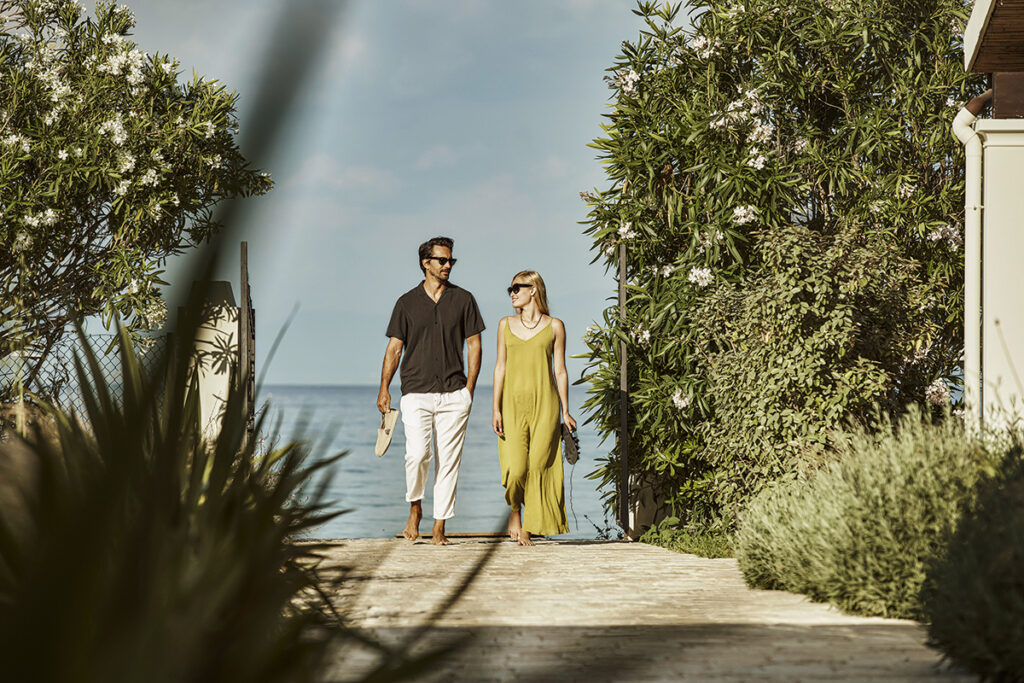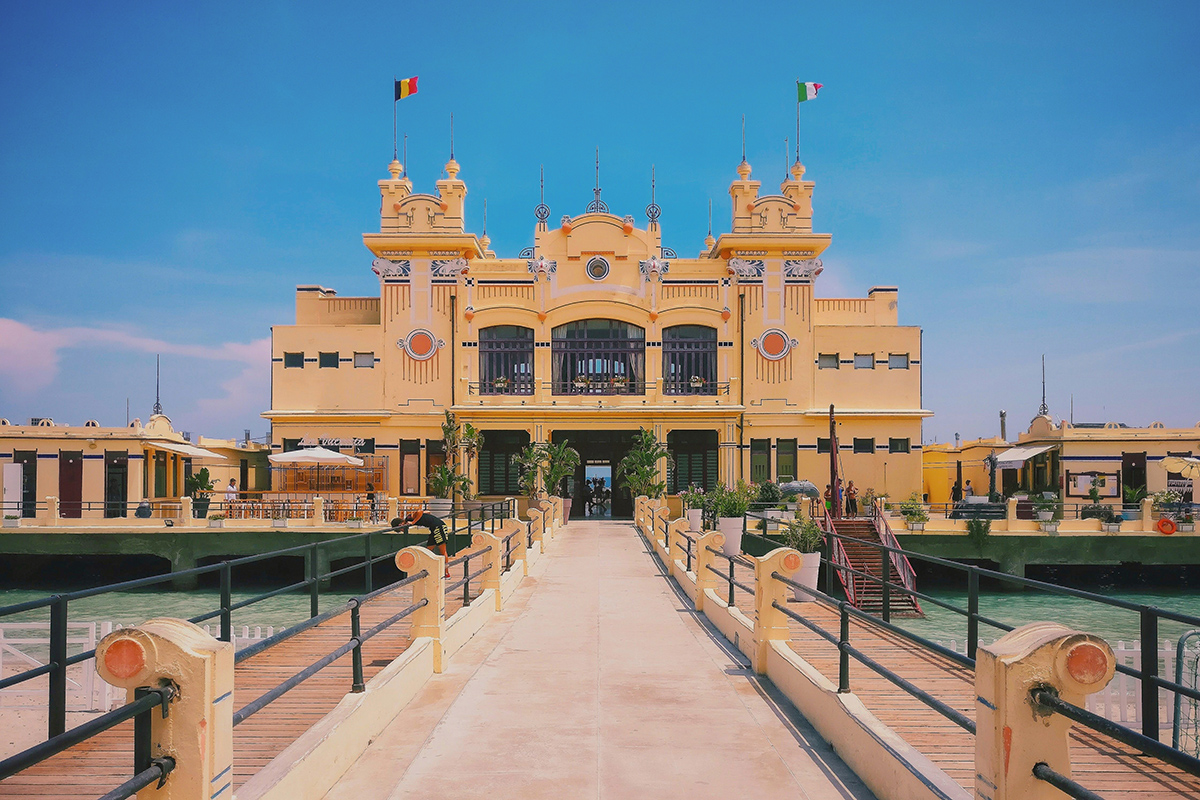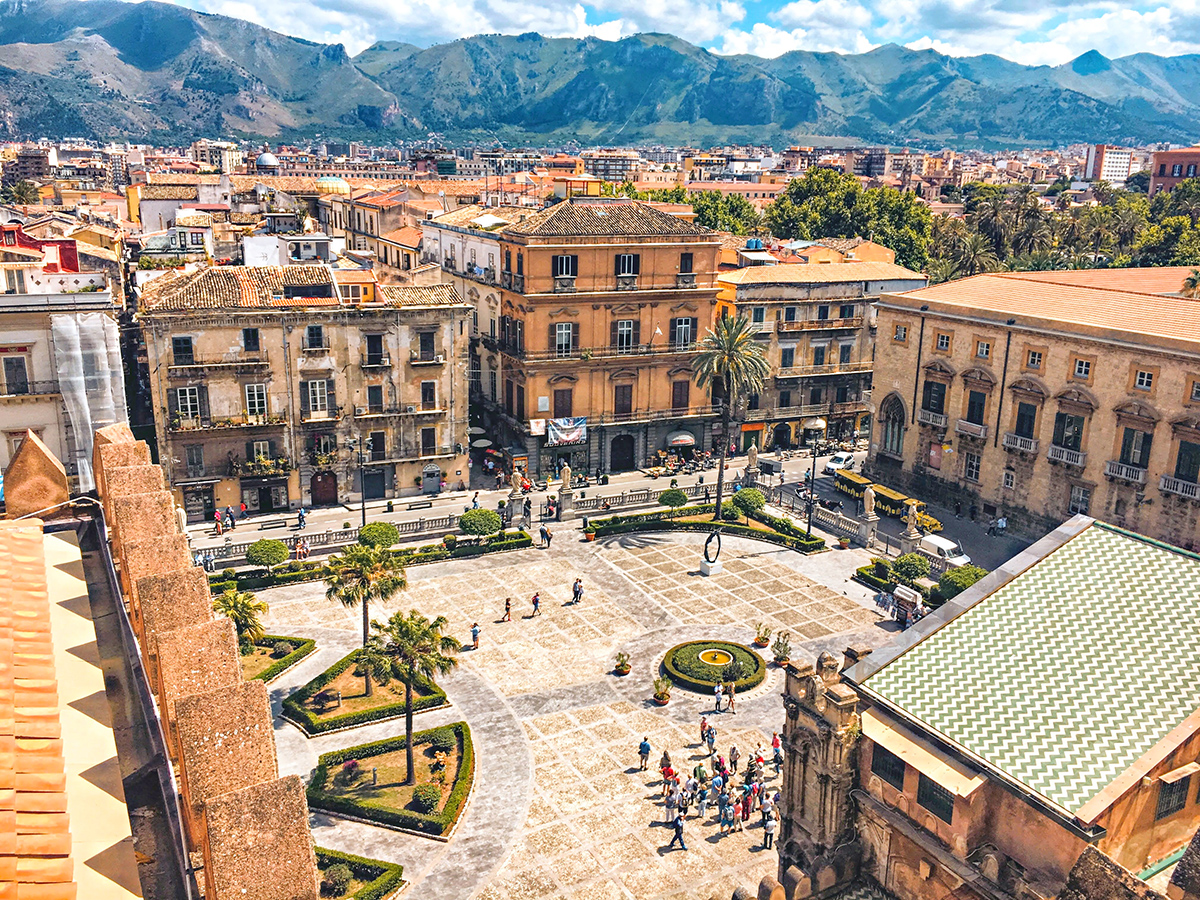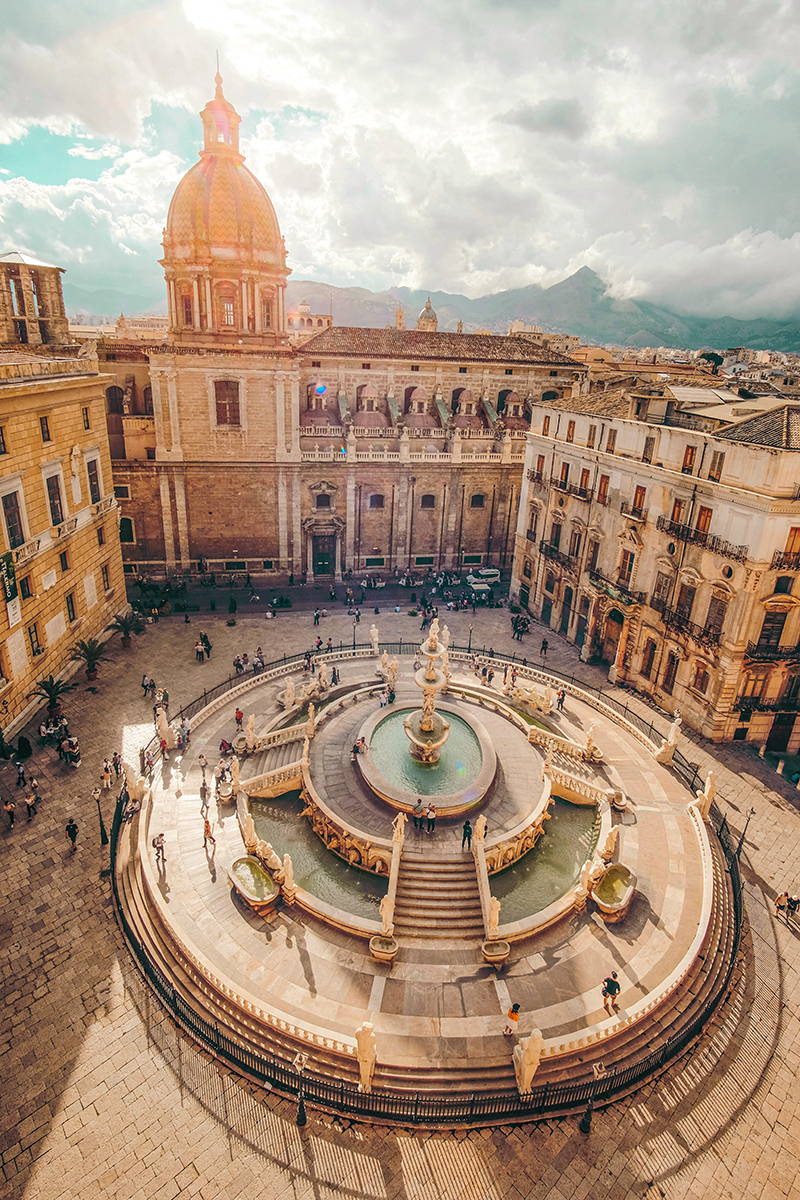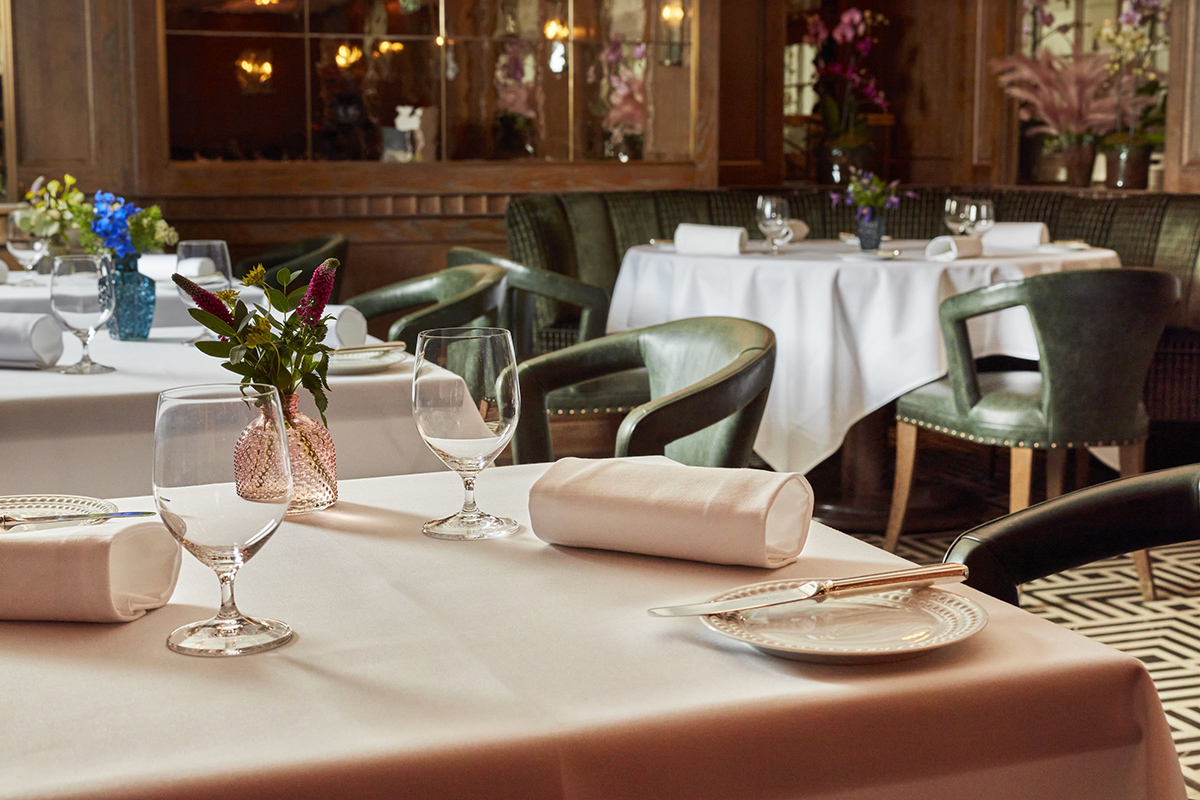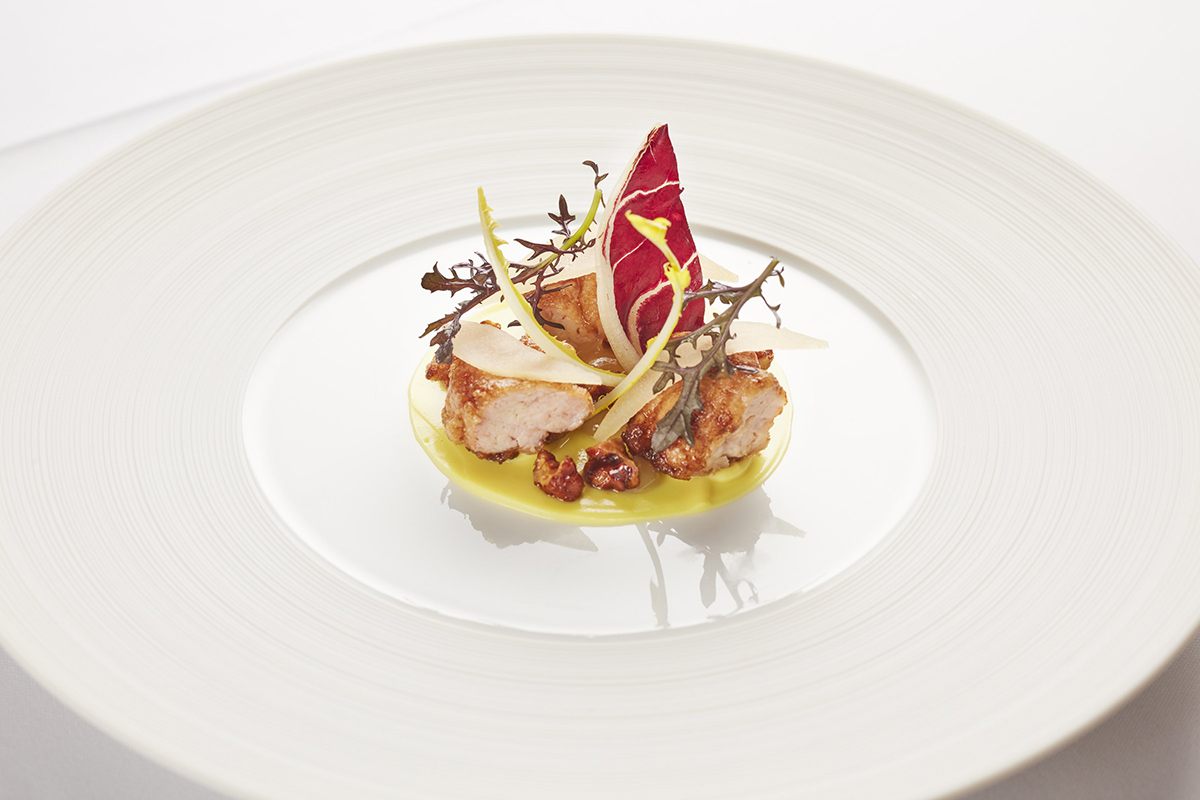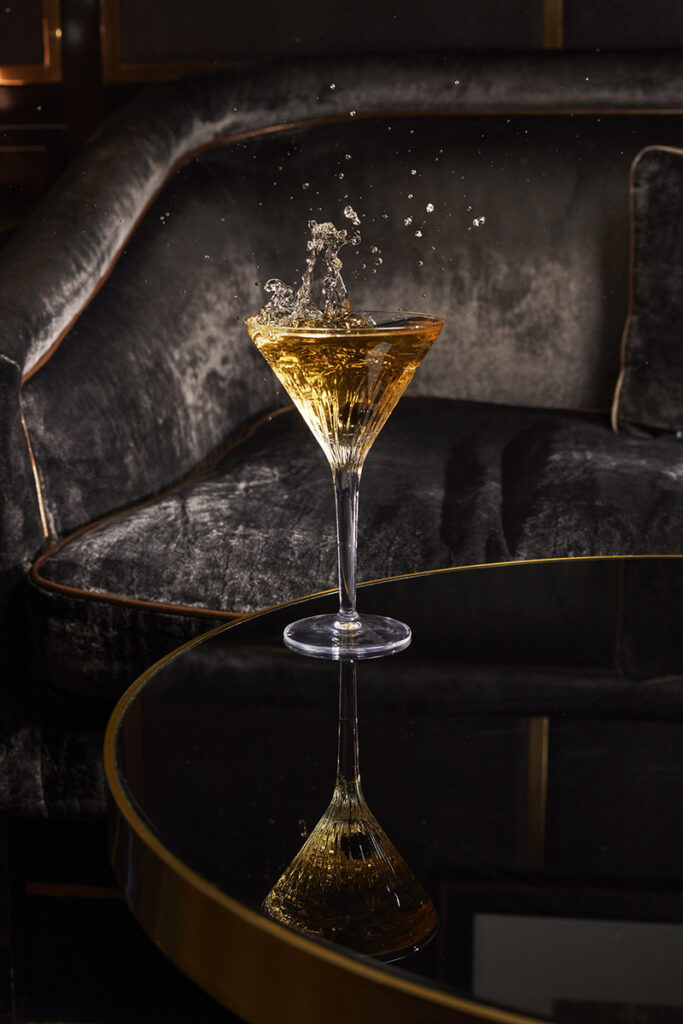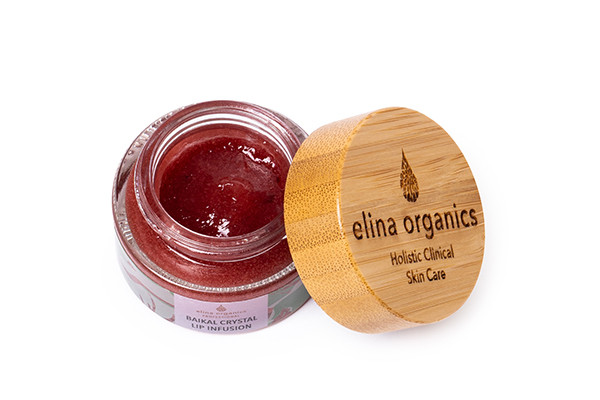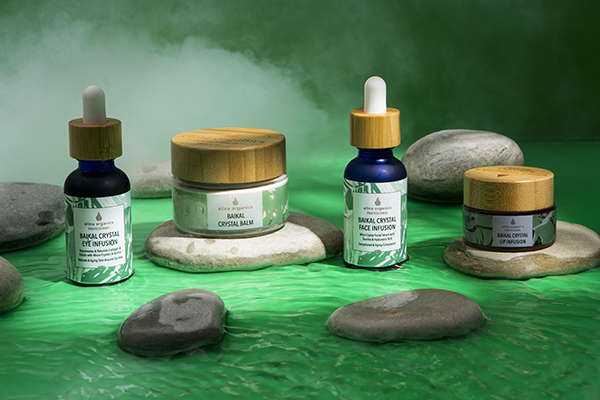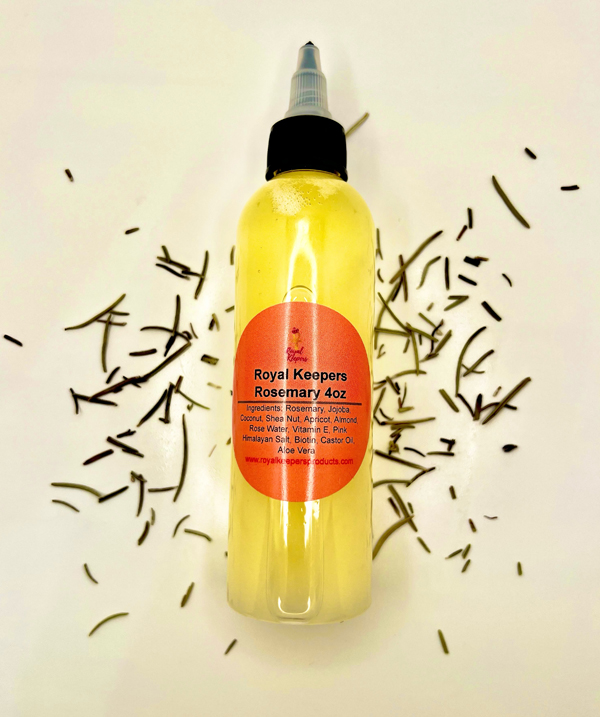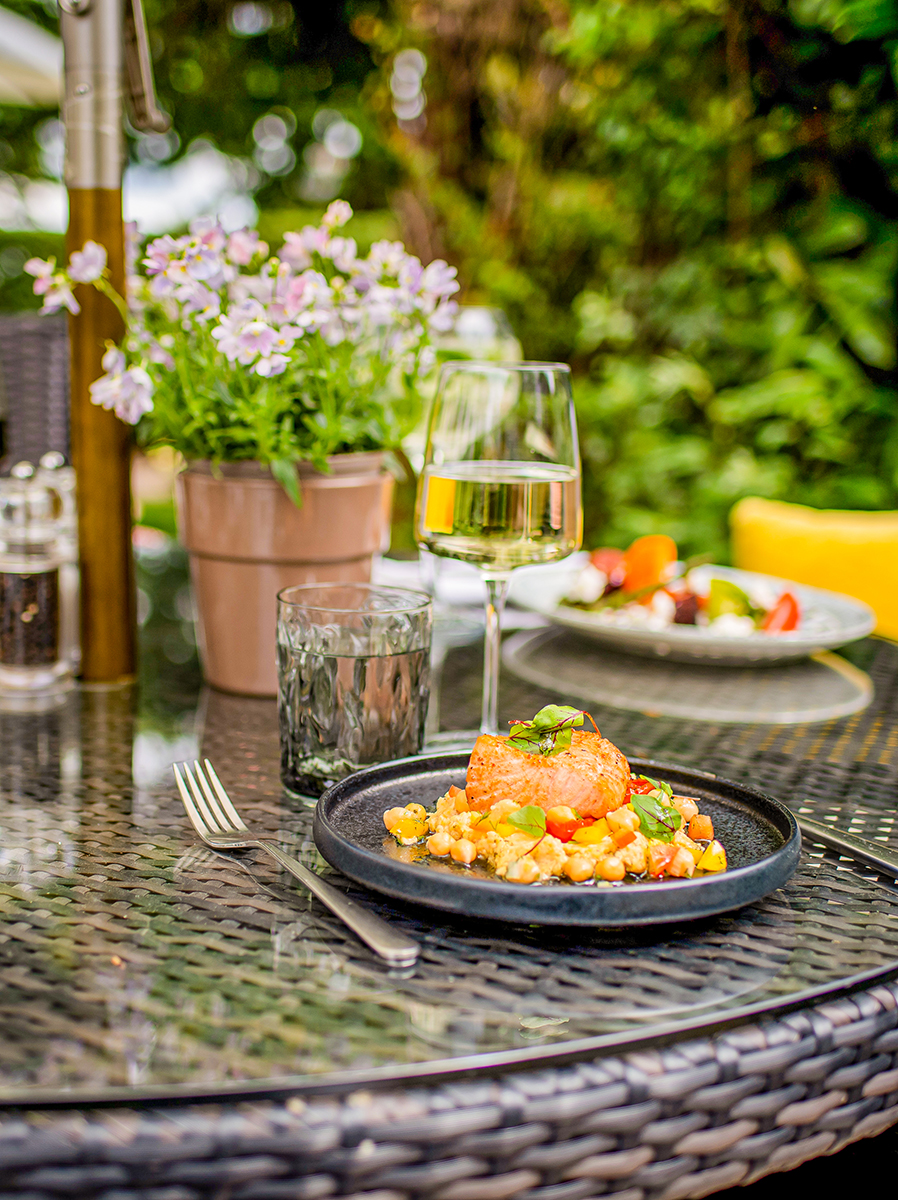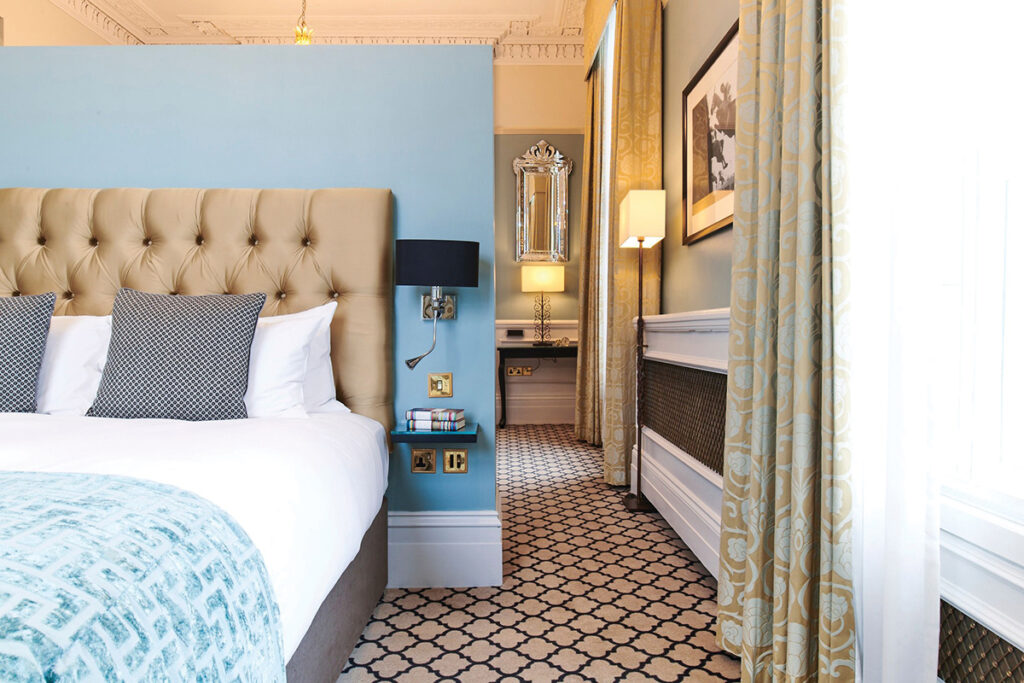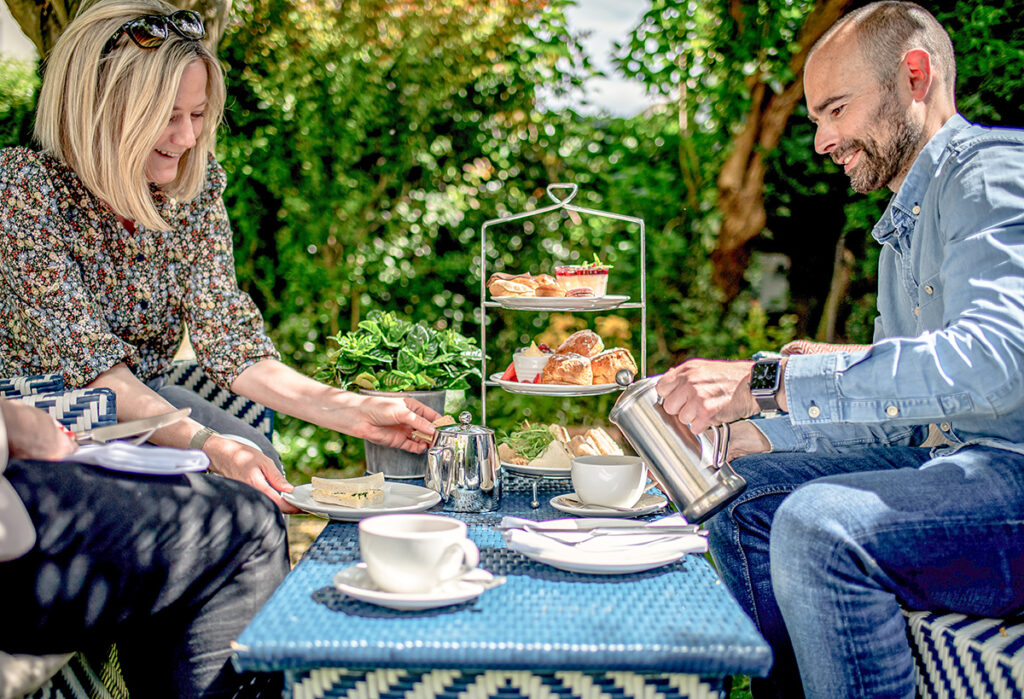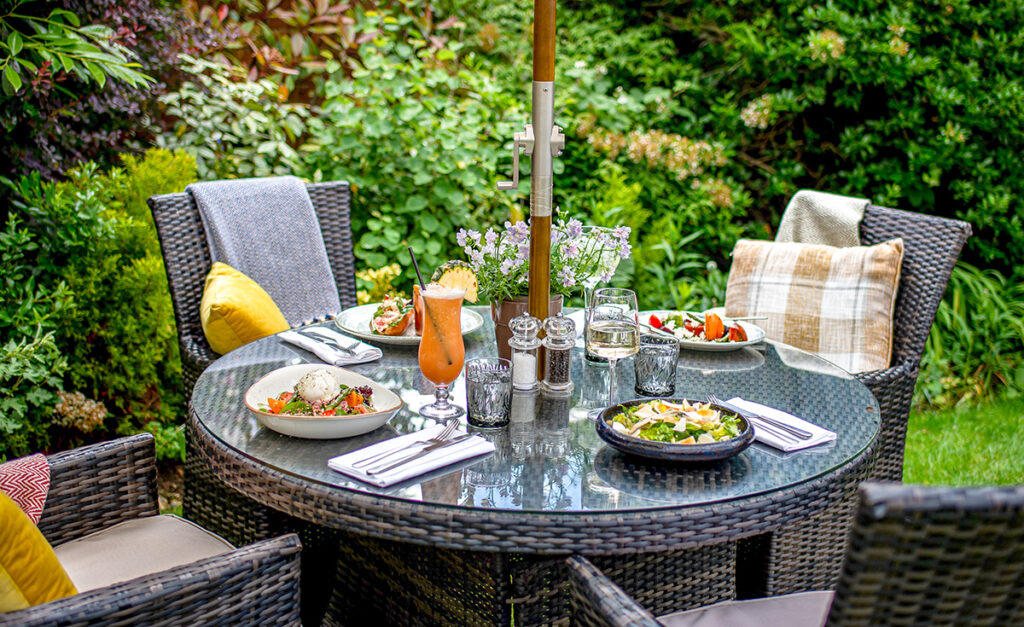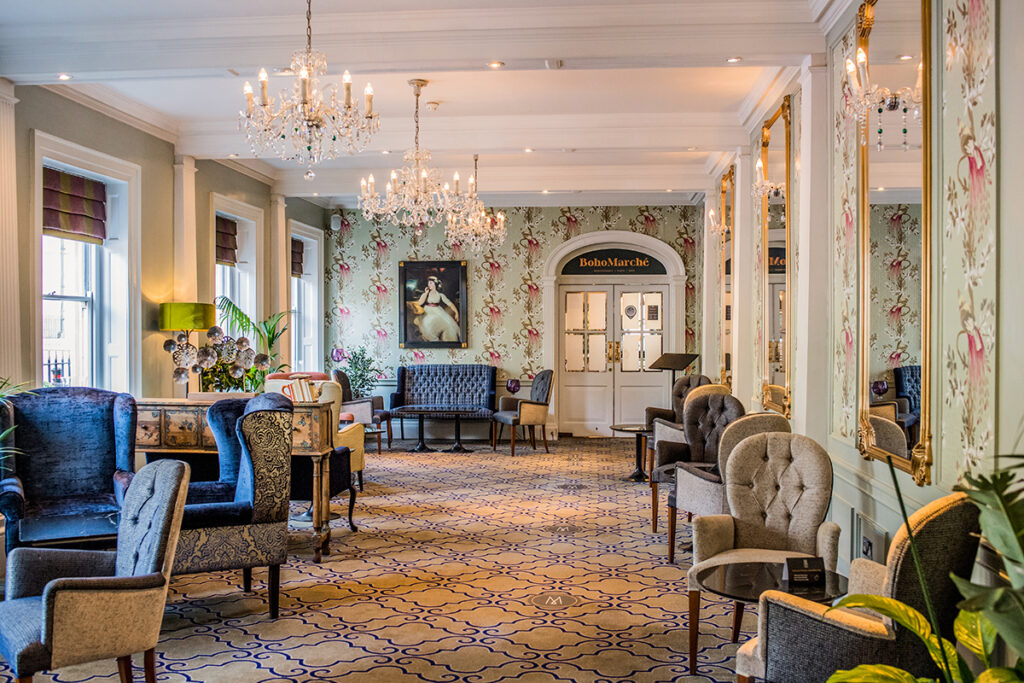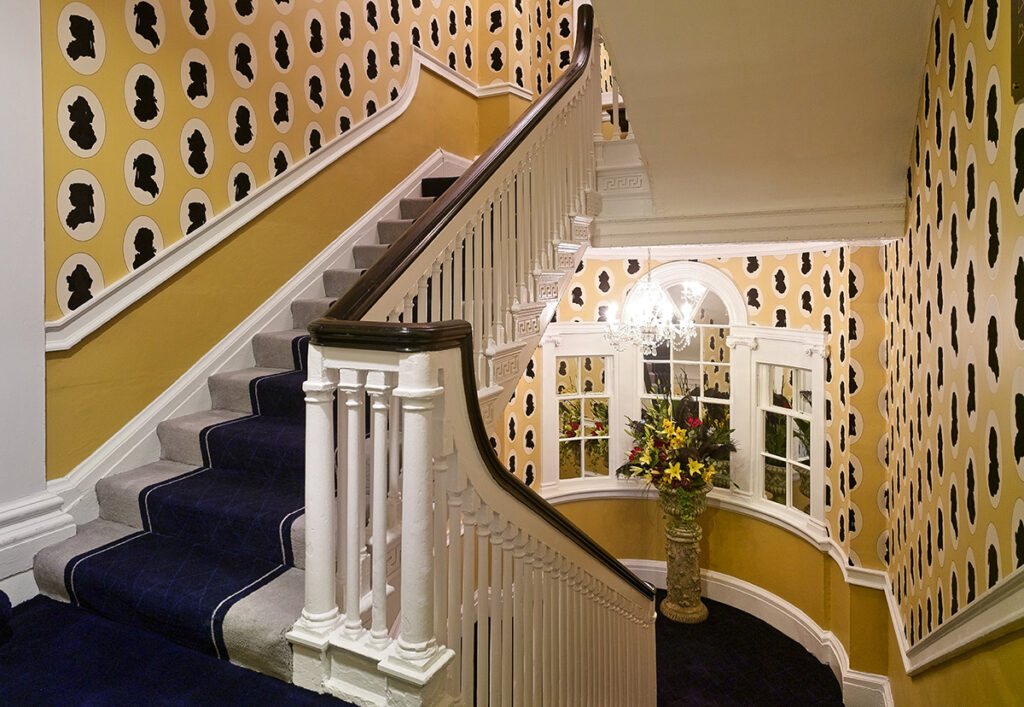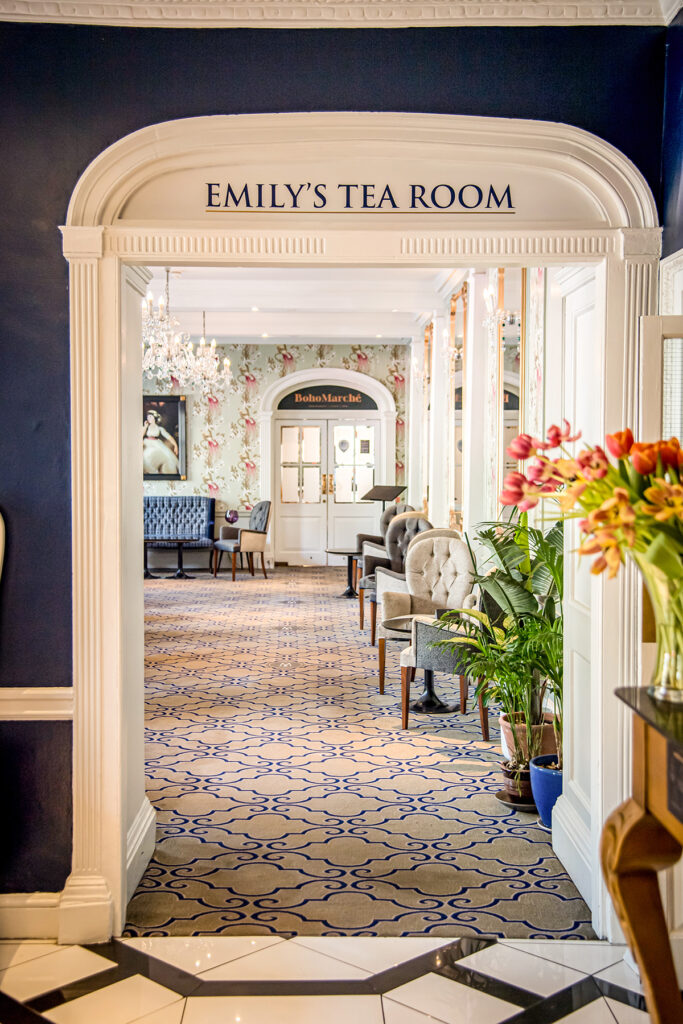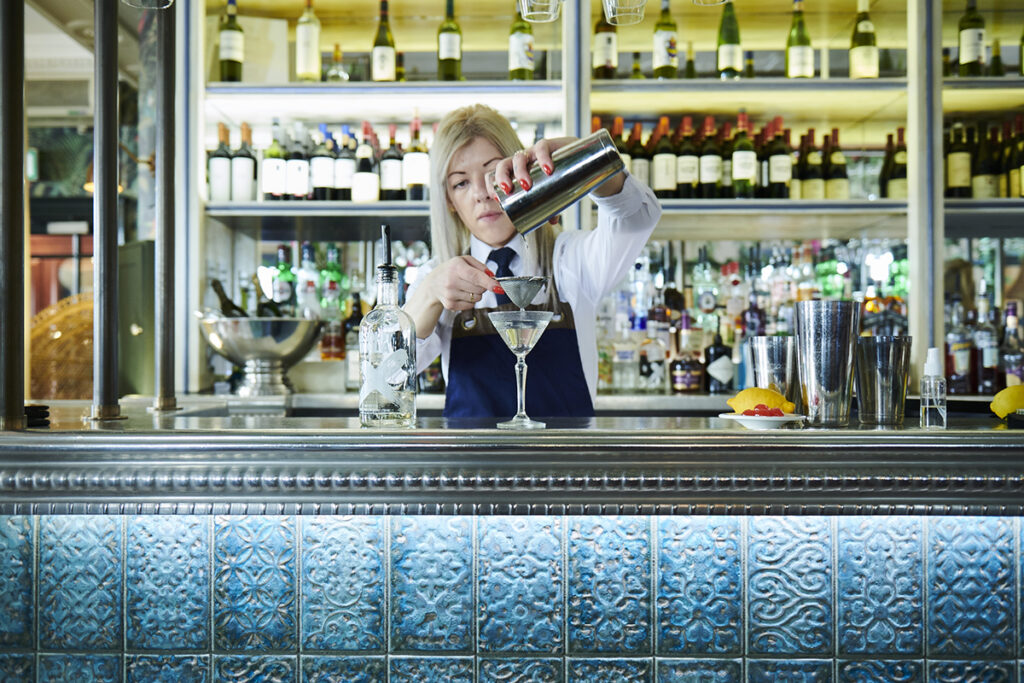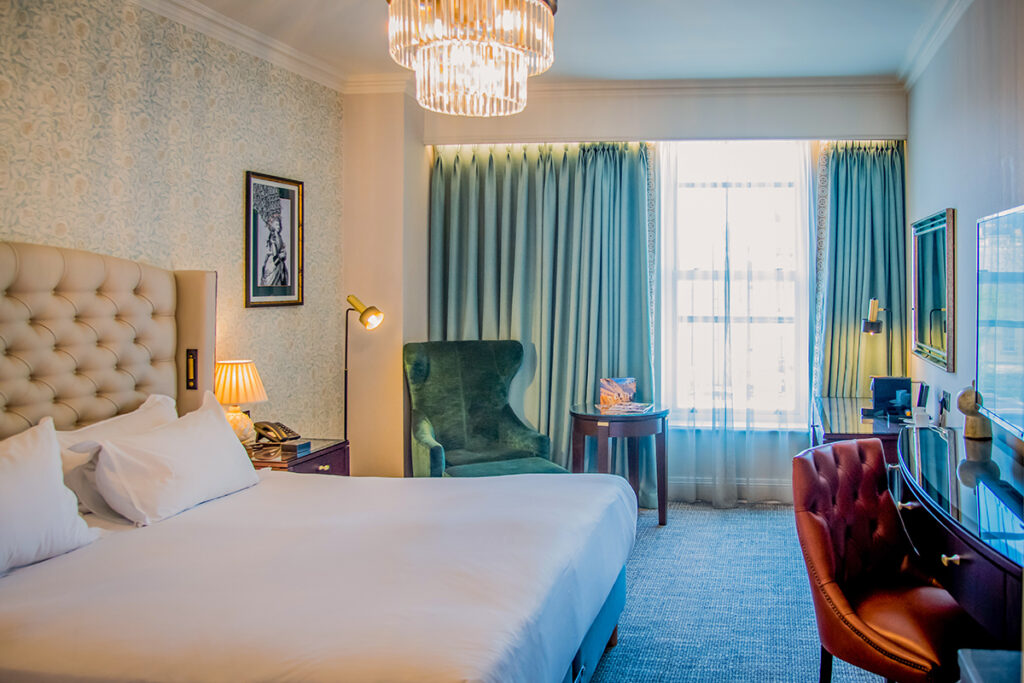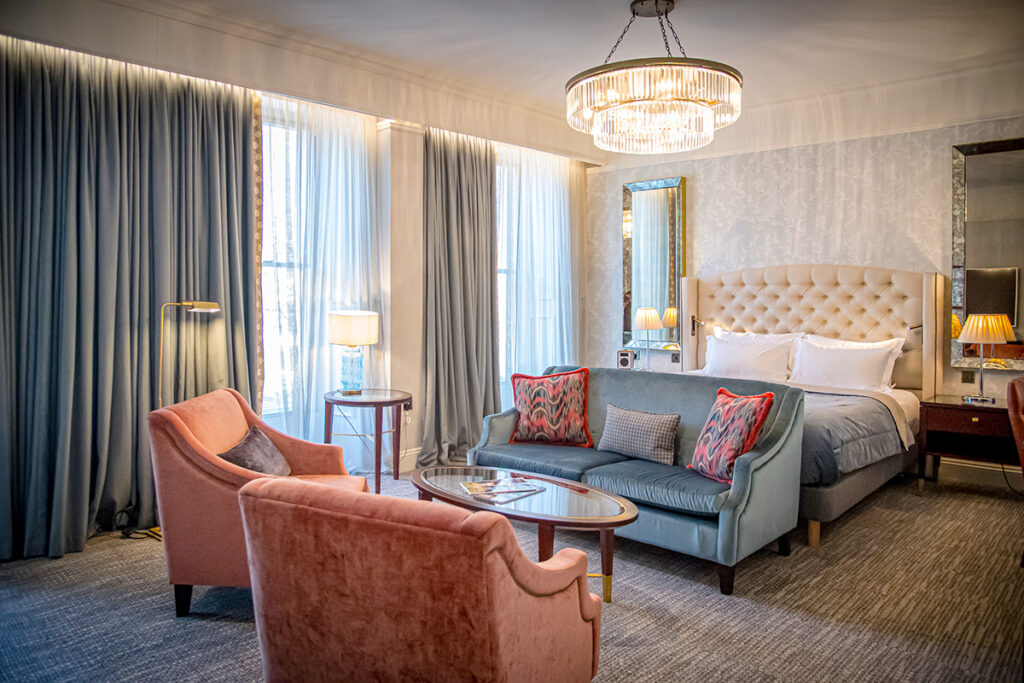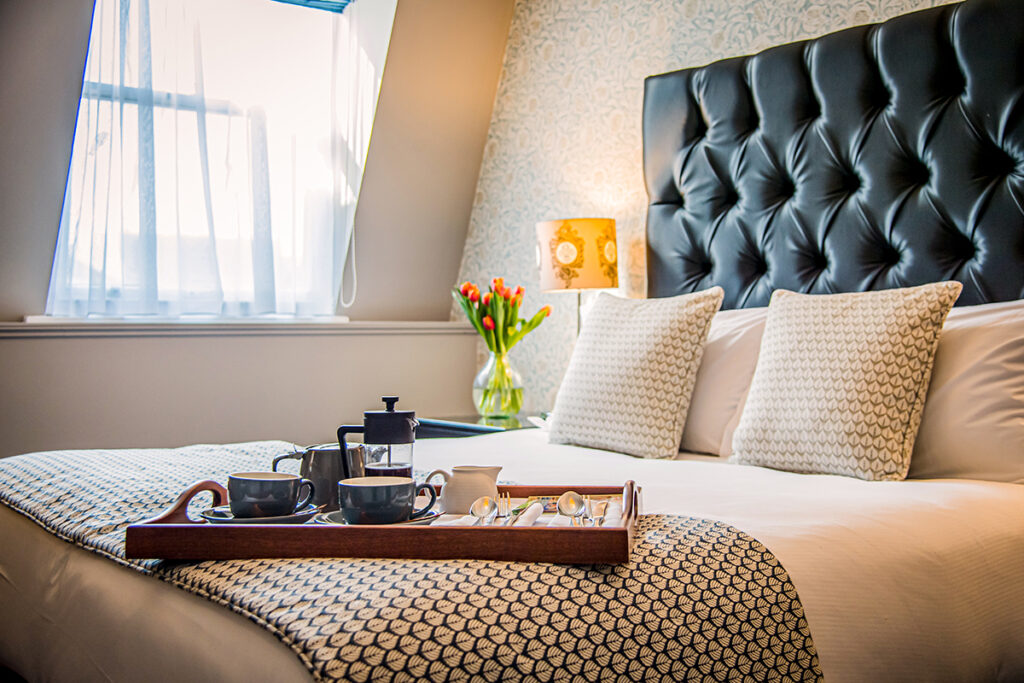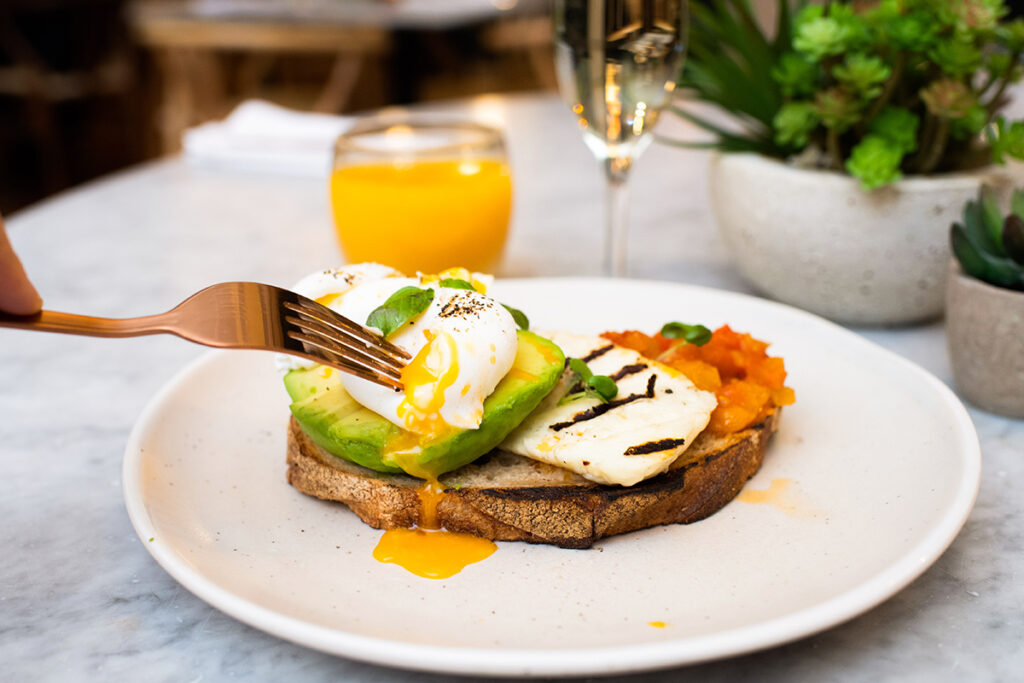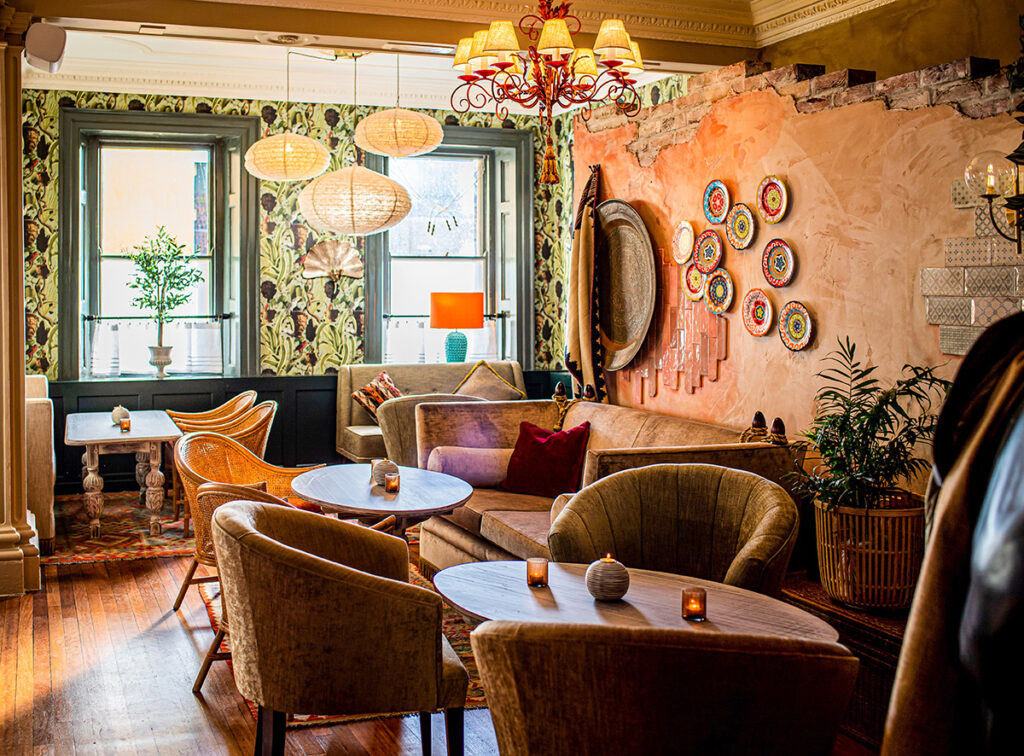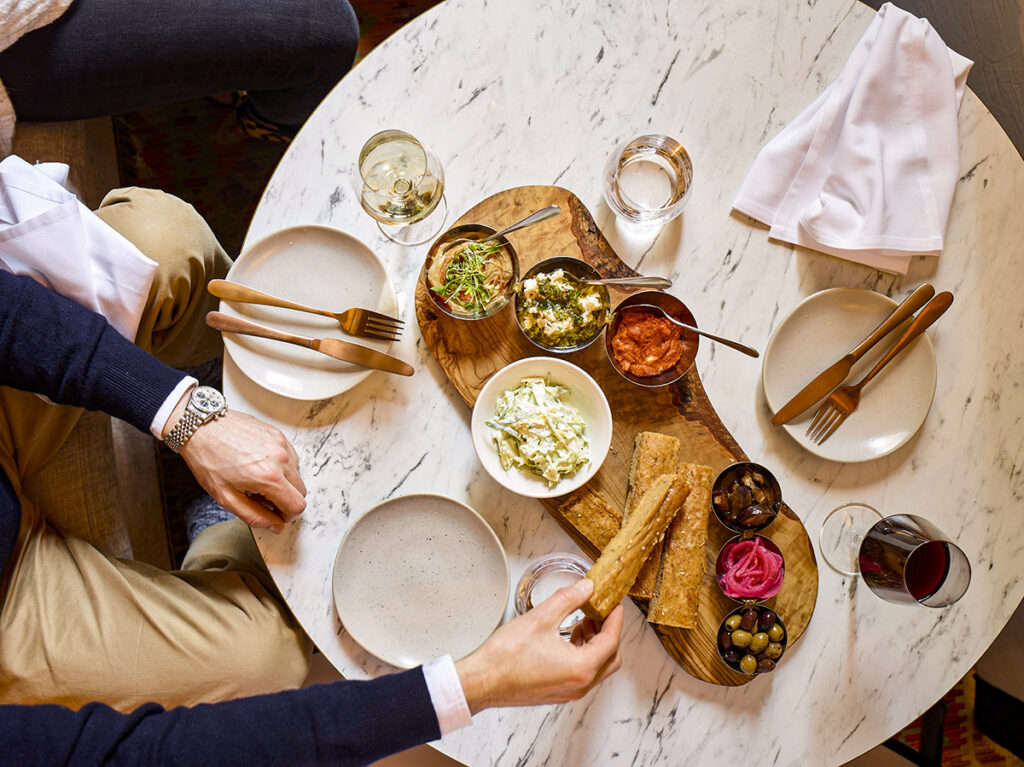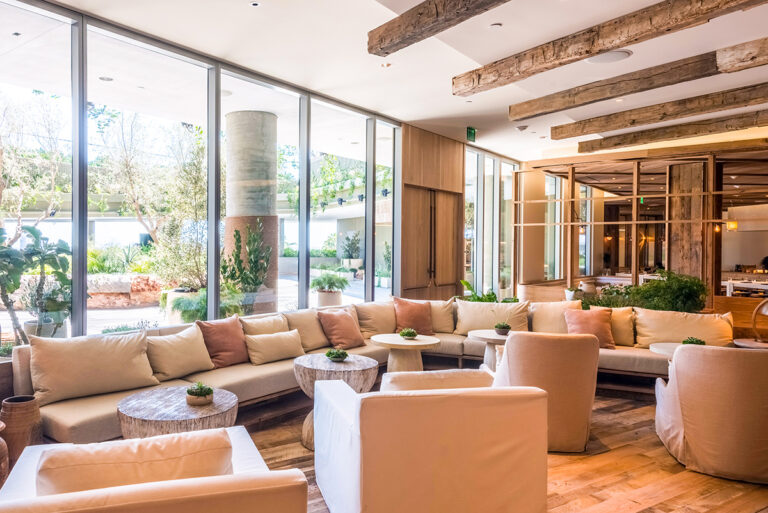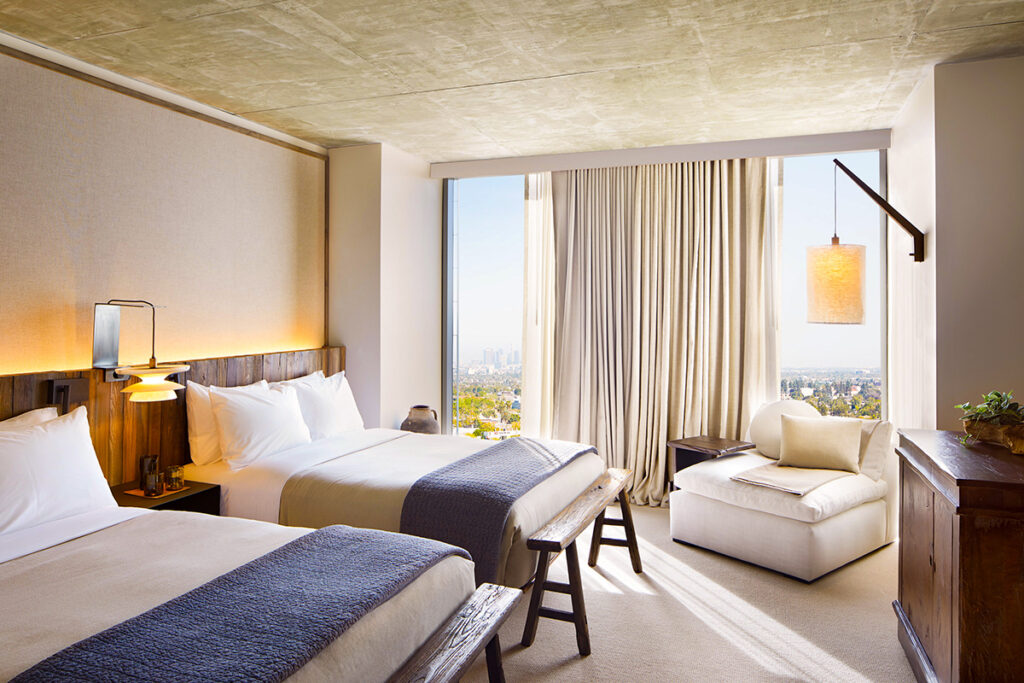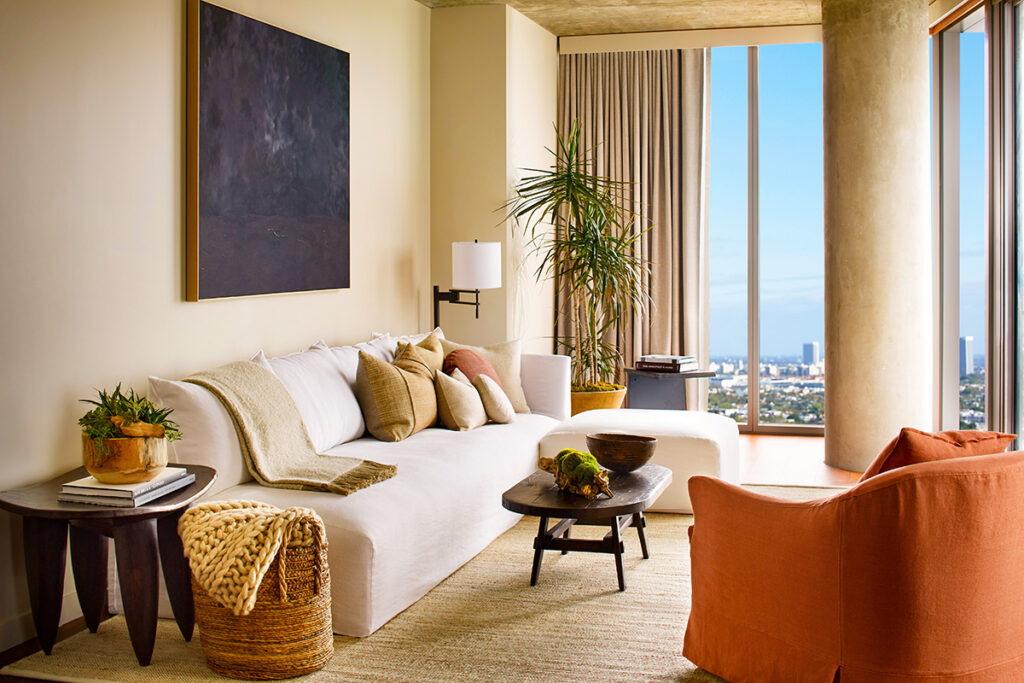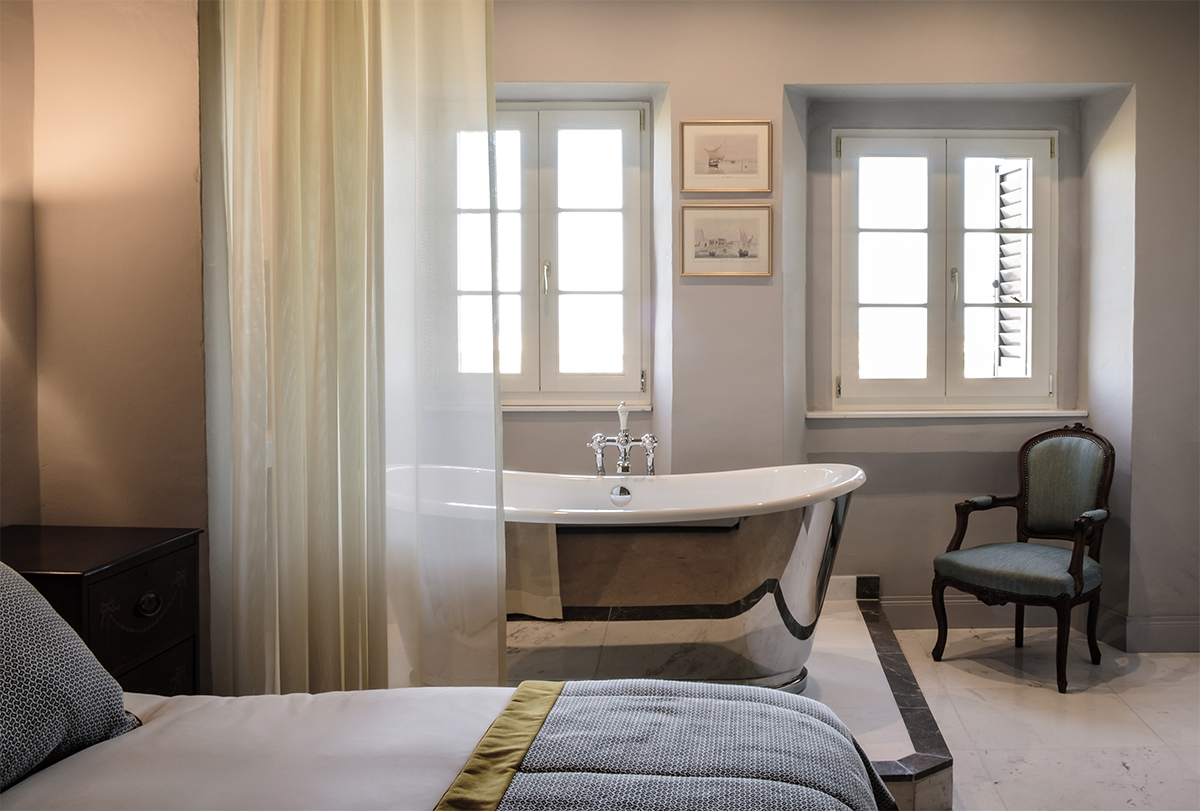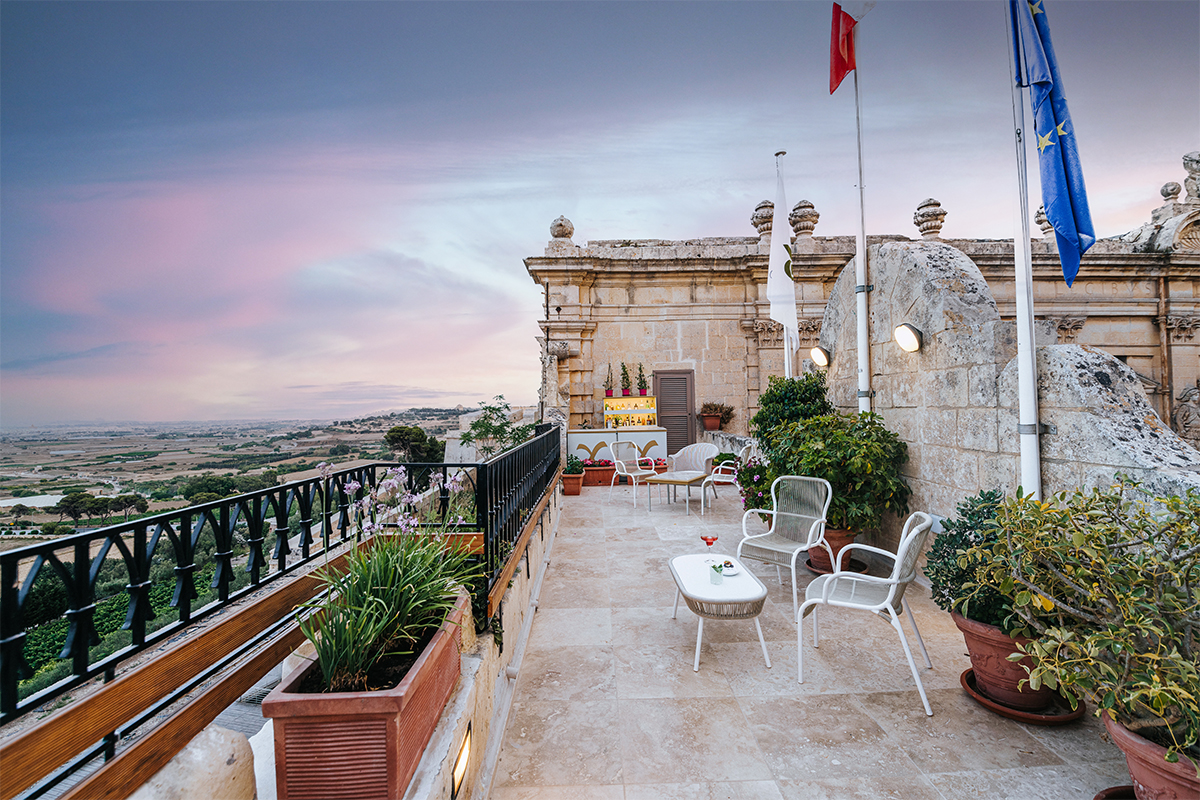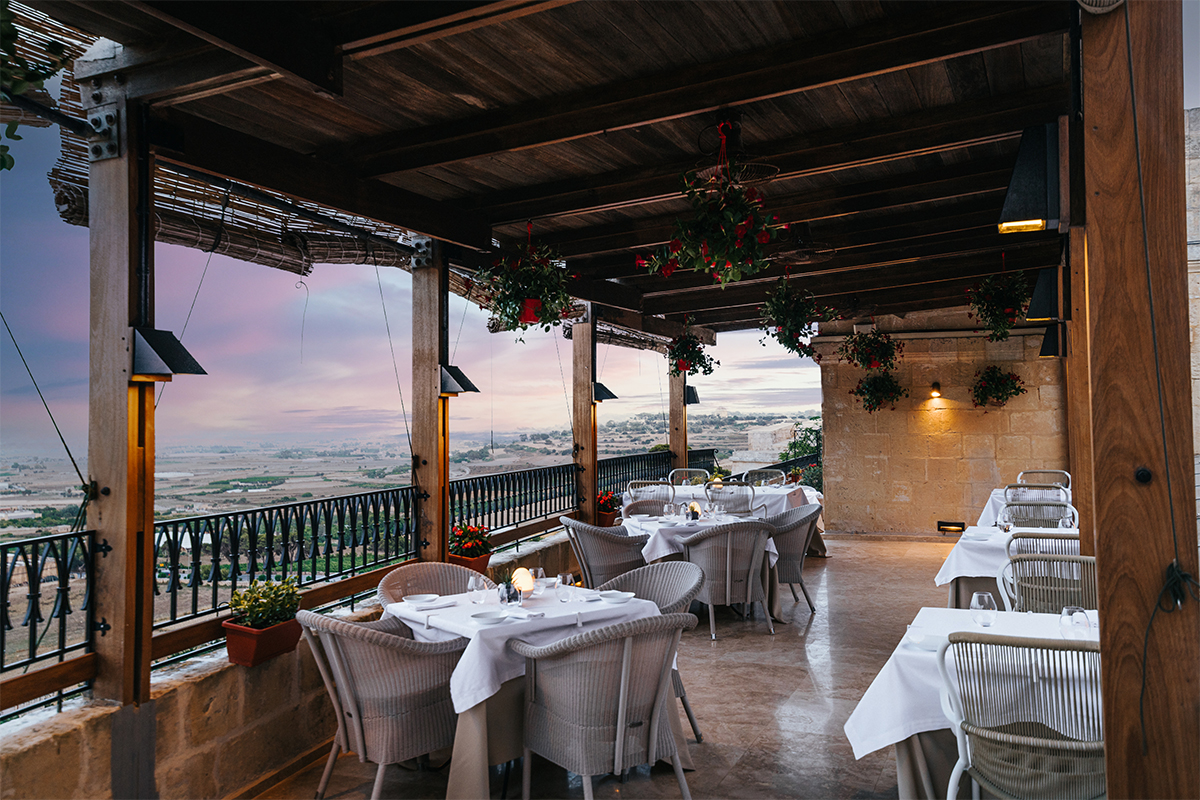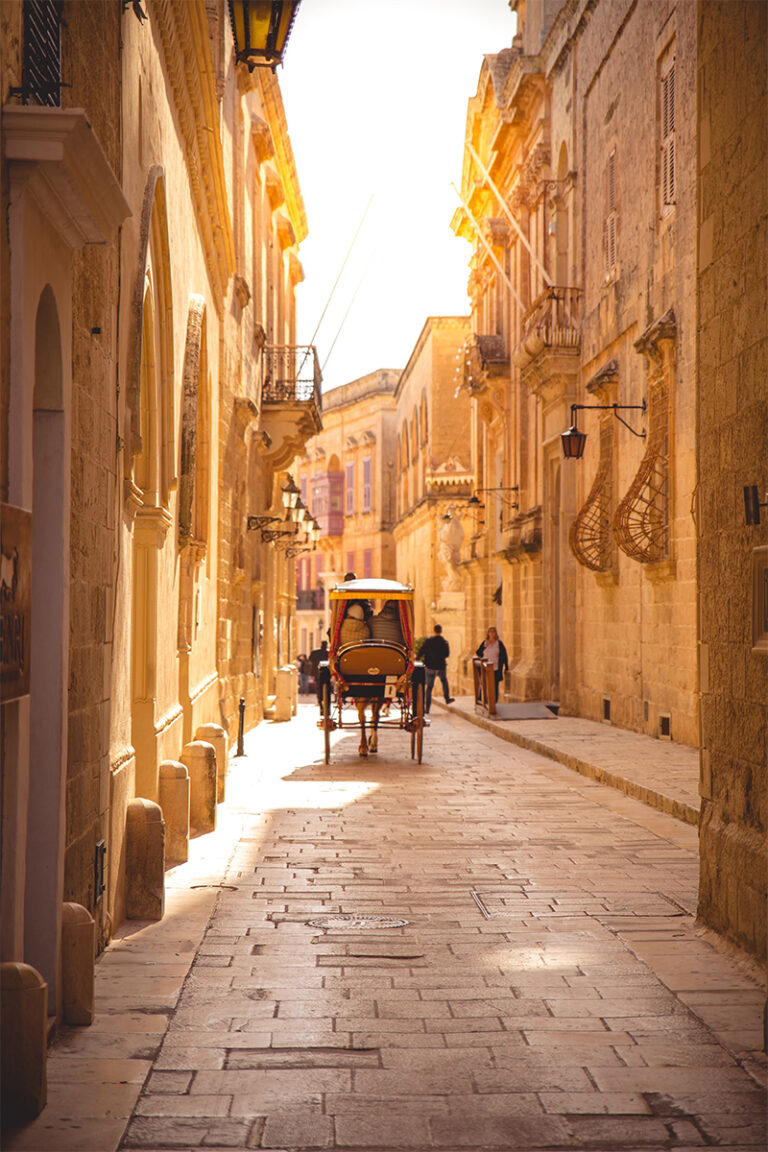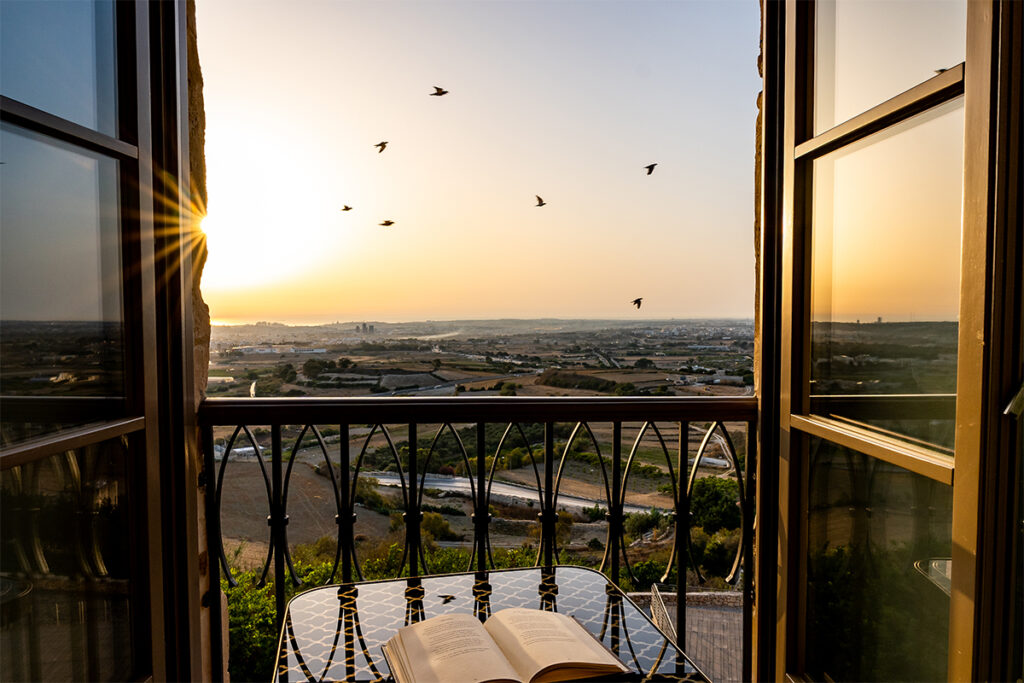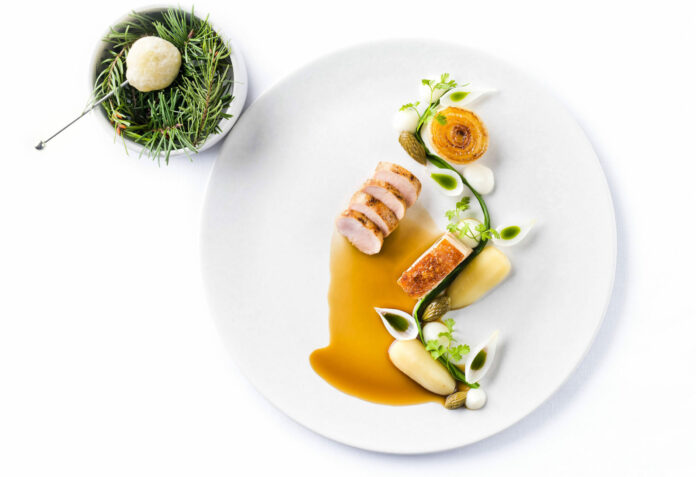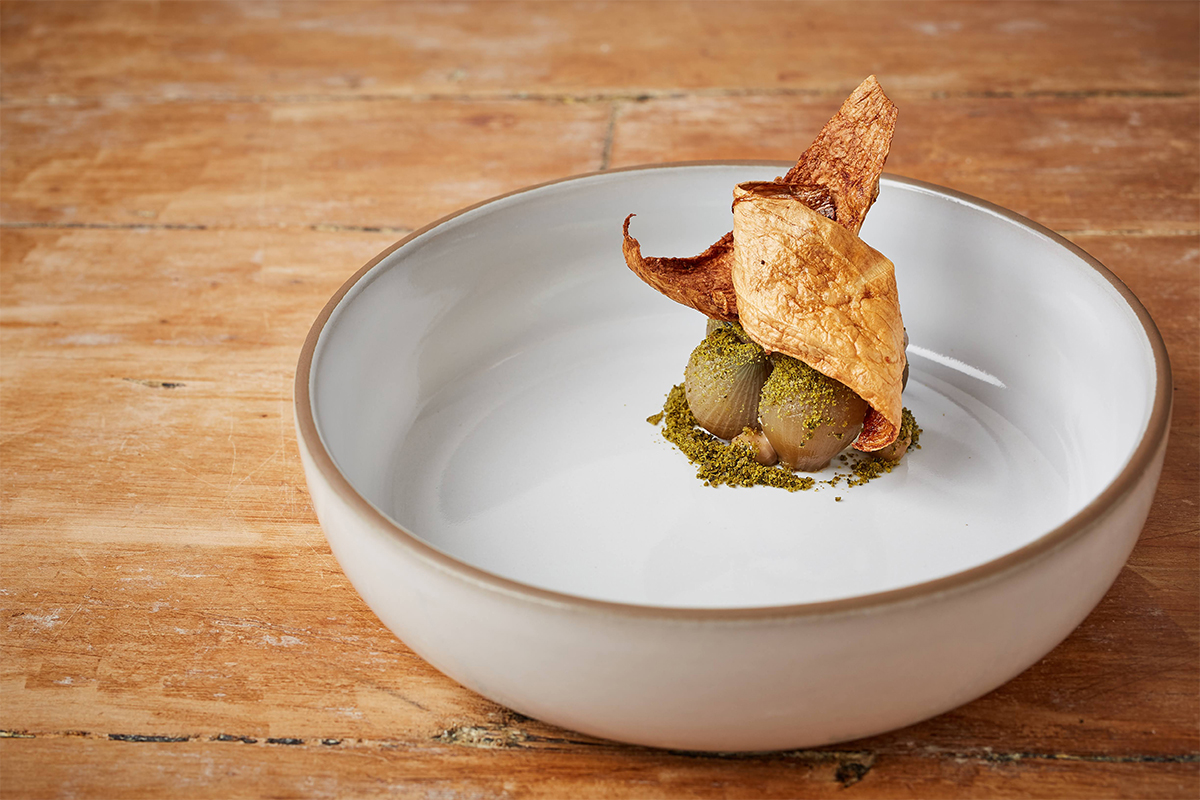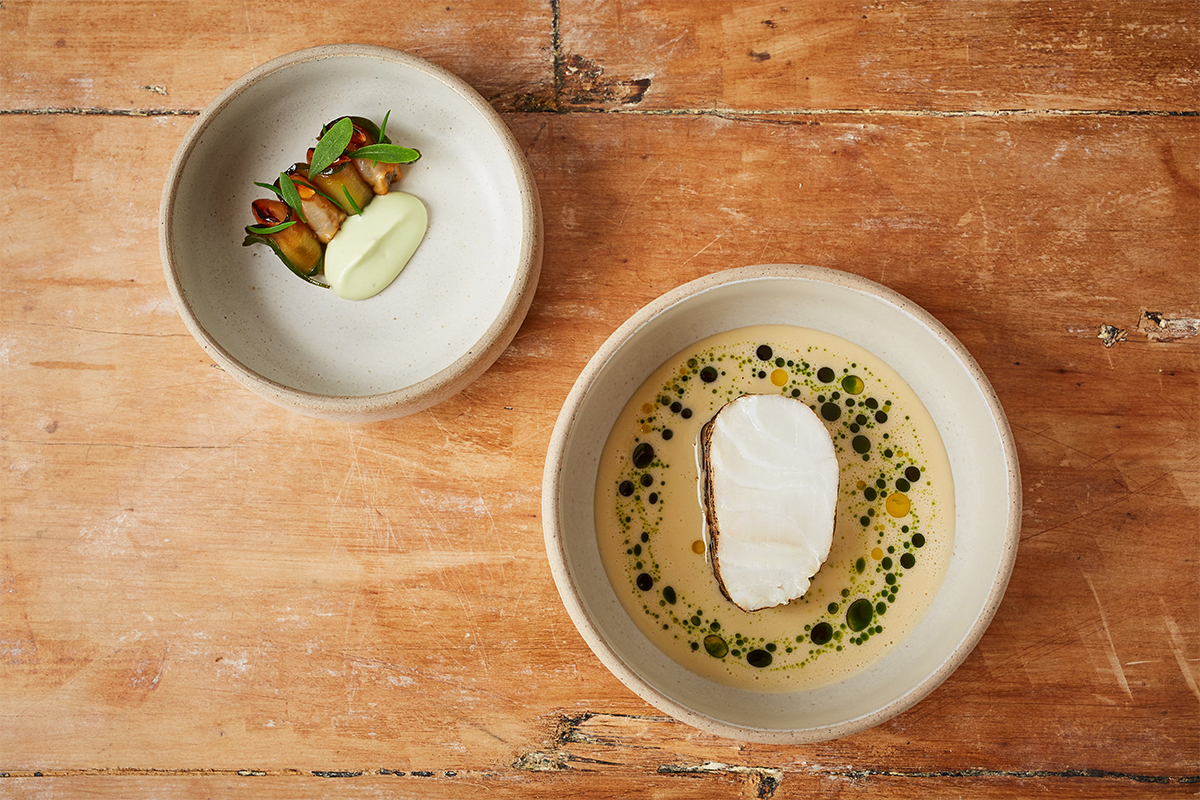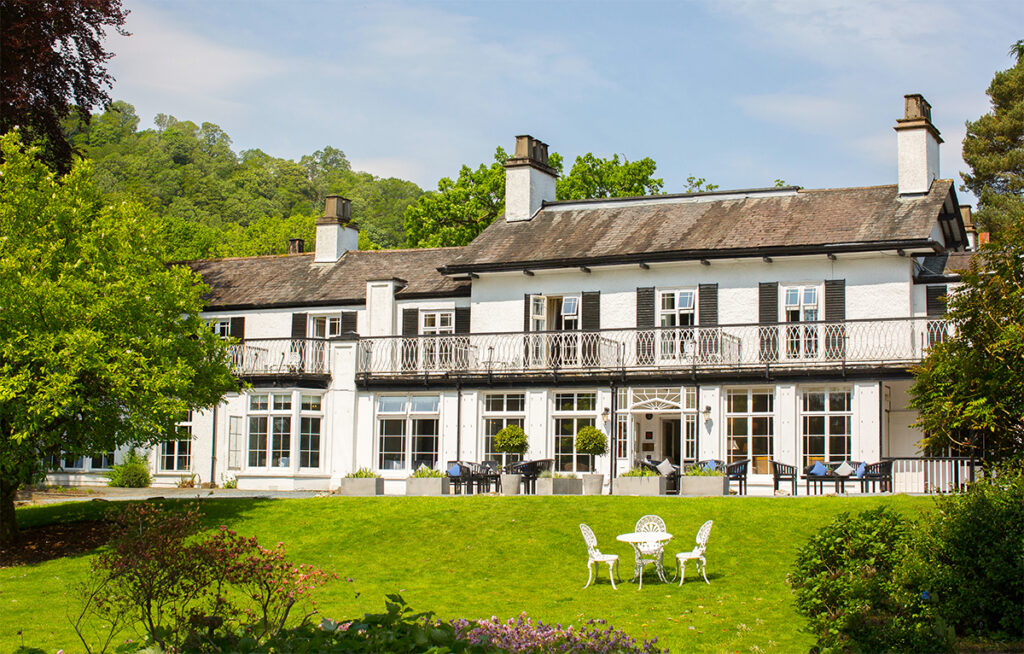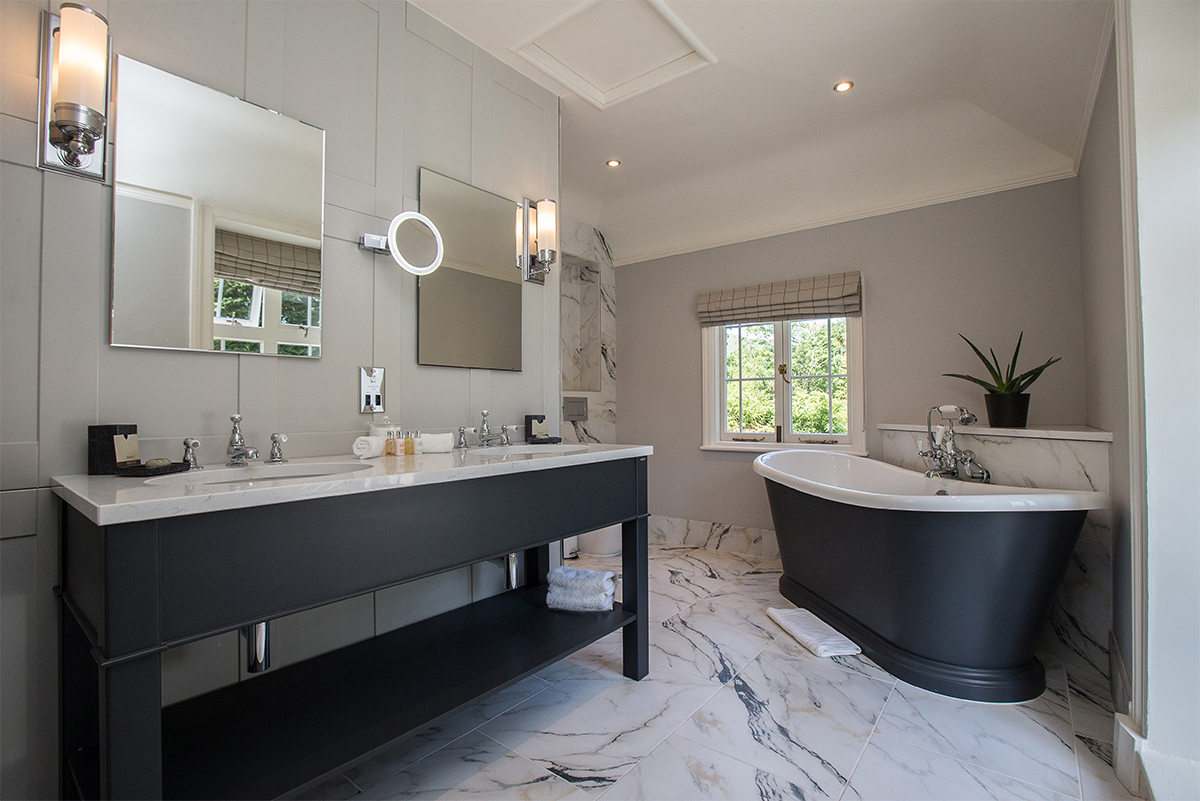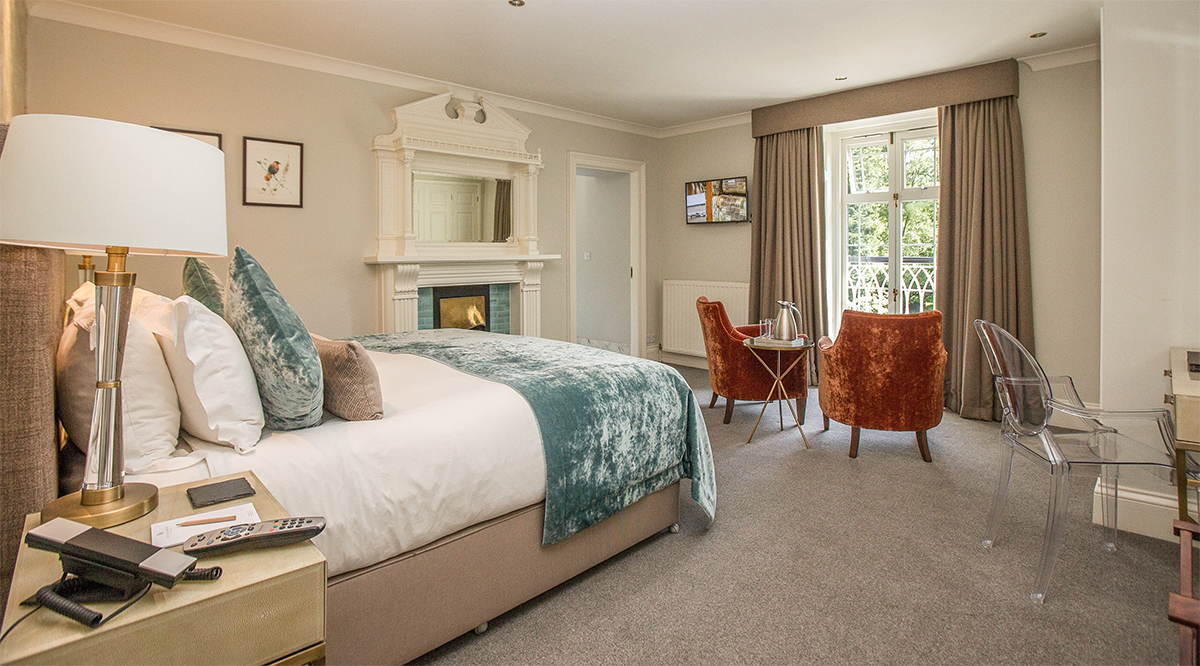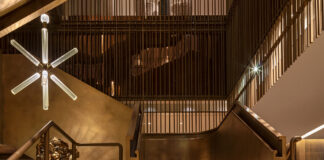By Sophie Ibbotson
There’s nothing more emblematic of the Mediterranean than a grove of olive trees where the branches catch the breeze, their leaves sprinkled with the salty spray of the sea. Olive oil is not only a key ingredient in the local diet, and credited with increasing longevity, but it’s also in soaps and cosmetics, and can even be used for candles and lamps. The developers of the Olivar Suites in Corfu, Greece, recognize the ubiquity of the olives, their oil, and the trees, and have not only captured it in the hotel’s branding but in every element of its design.
The focal point of Olivar Suites is an 18th century olive oil mill looking out across Messonghi Beach on the southeast coast of Corfu island. It is a simple but handsome white washed building, and the quality of its restoration and updated setting belies its humble origins as an agricultural building. On the waterfront there is the Ionian Sea and the beach, dotted with loungers and umbrellas, plus an all-day bar; and to the side is the tranquil mirror of Olivar’s main swimming pool, reflecting the facade of the mill. Perhaps the most special spot is to the rear of the mill, however, where the historic olive trees – some as much as 300 years old – still grow in the square. Their gnarled trunks stand like works of sculpture, especially when artistically floodlit at night, reminding guests that the olive trees were here, part of the landscape, long before any development.
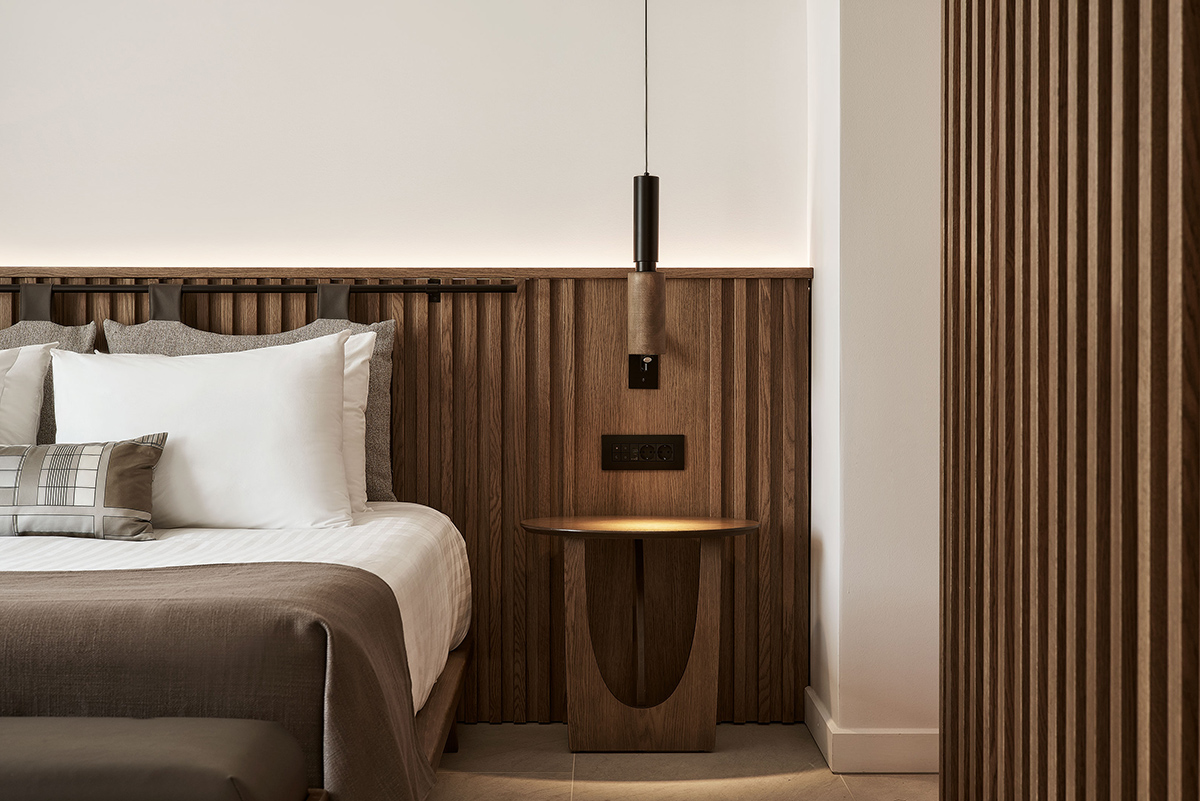
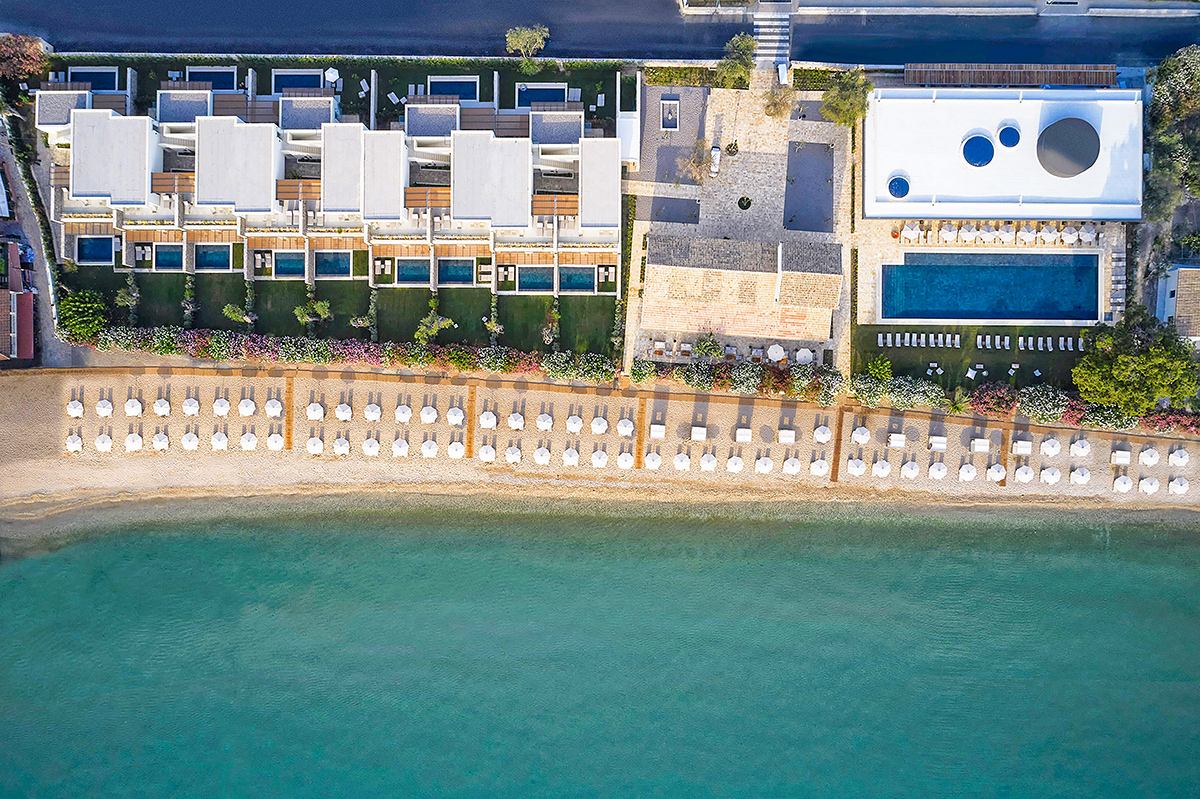
Olivar’s designers have deliberately left as many trees as possible in situ: this is their land, after all. In fact, the main reception building, which also includes a bar and the hotel’s spa, is built around a particularly large and dramatic olive tree and it has become a feature of the architecture. Elsewhere, trees line the pathways like columns in an Ancient Greek temple, and they add height to the miniature gardens at the entrance to each private suite.
The suites themselves deserve mention, because however hot the summer sun, the interior of each suite is carefully structured to cool both the body and the mind. The muted color palette and simple lines are refreshingly contemporary, and as none of the rooms are overlooked, it is wonderfully private. First thing in the morning, slide open the double doors onto the terrace and take a dip in your own plunge pool, swimsuit optional. The water may be bracing, but it is an energizing way to start the day, with no sound but the twittering of a bird perched in yet another olive tree beyond the wall.
Once breakfast calls, or at any other time of the day, you can amble through the resort, all of which is car-free, to the public areas located around the mill and on the beachfront. They are just a few minutes’ walk away and it offers another chance to admire the planting in the gardens. Each tree, each flowering bush, has been selected because it is native to Corfu and thus well-suited to the hot and arid climate. They’re flourishing at Olivar’s, and make the complex feel like a particularly picturesque village.
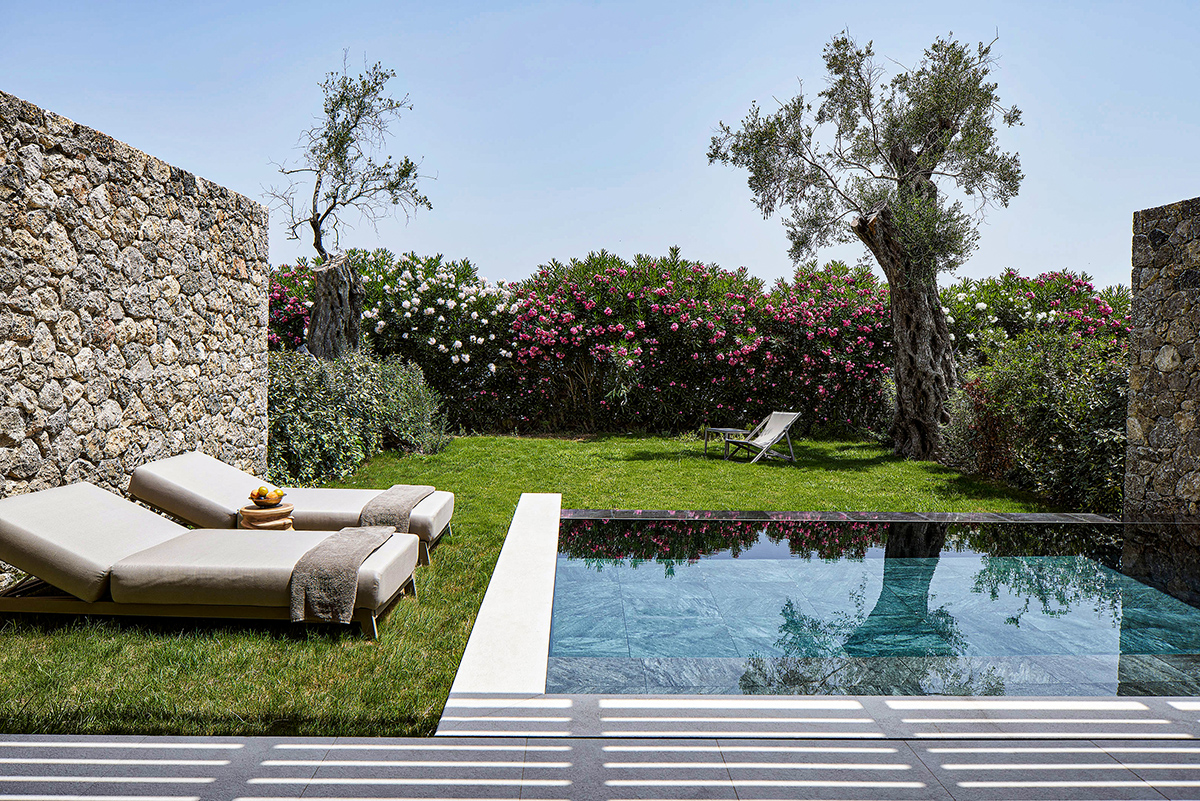
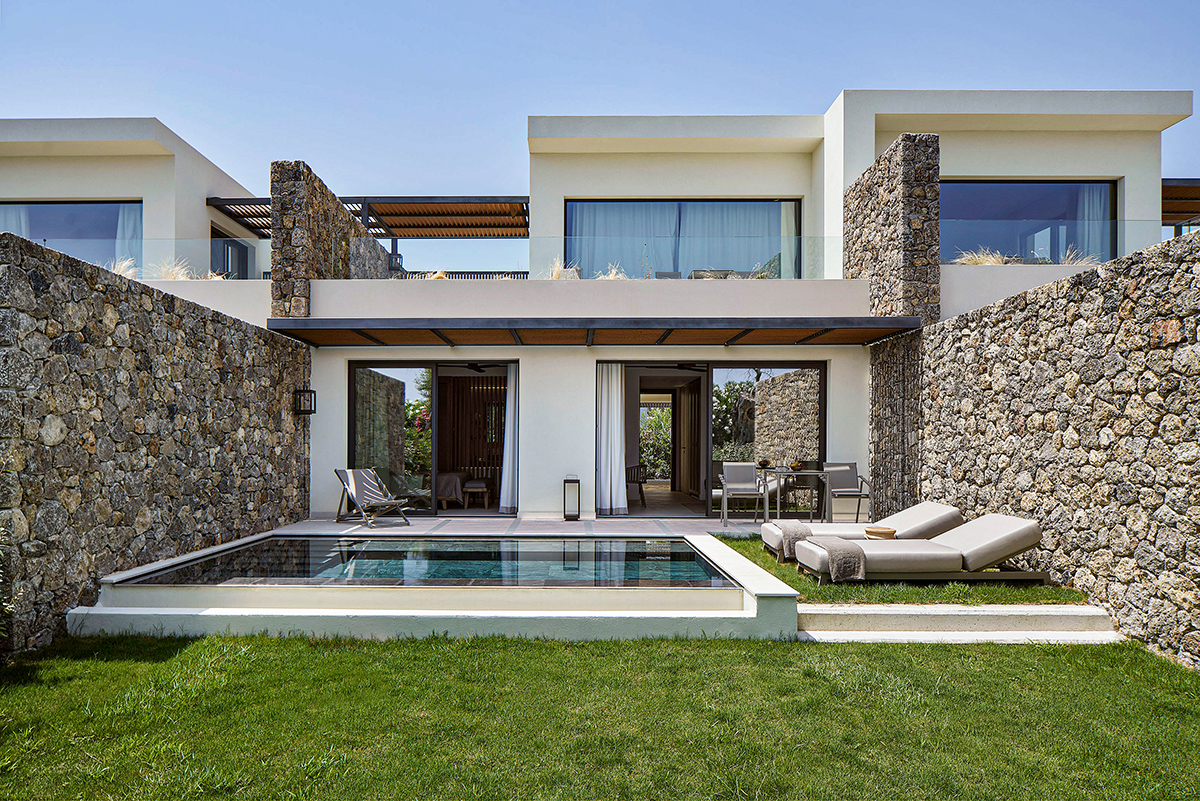

If you plan to spend all day on the beach – and that is mightily tempting given how stunning the views are, and how warm the sea – then Olibar will meet your needs. Head Bar Manager NIkos Provatas is a fiendishly accomplished mixologist, and he and his team run this all-day bar situated inside the olive mill and opening out onto the beachfront. The menu is playful yet elegant, and always unpretentious. As you relax, perhaps sunbathing or reading a long-awaited novel, you can refresh your taste buds with a red ice tea (Greek mountain tea served with pomegranate and red fruits) or perhaps a freshly cold pressed juice. When it is time for a snack, graze on tasty plates such as a Greek salad with watermelon, including huge, soft hunks of locally produced feta cheese, or grilled chicken kalamaki, crusted with seeds and served with cooling tzatziki and a zingy peach salsa.
As delicious as this sounds – and the flavors do live up to the words – the real culinary mastery happens a stone’s throw away across the pool at Flya. The chances are that this is where you’ll take breakfast, in a remarkable looking contemporary building, the design of which owes as much to Japan as it does to Corfu. This is the playground of award-winning Head Chef Spiros Agious, who has honed his craft during more than 20 years working in Greece’s best kitchens. The menu starts simply in the morning, but as the day goes on it evolves and becomes one of the top fine dining restaurants on the island.
Spiros prides himself on respect for the environment and love for his homeland, Corfu. As far as possible, he sources all his ingredients responsibly, seasonally, and locally. This includes seeking out tiny producers on the island who make specialist products entirely by hand. Everything is carefully chosen; there’s nothing frivolous. As a diner you get the sense that each morsel of food on your plate has had to earn its place, telling the next part of Spiros’ story about the culture and heritage of his beloved island, and the way in which it harmonizes with the natural environment.
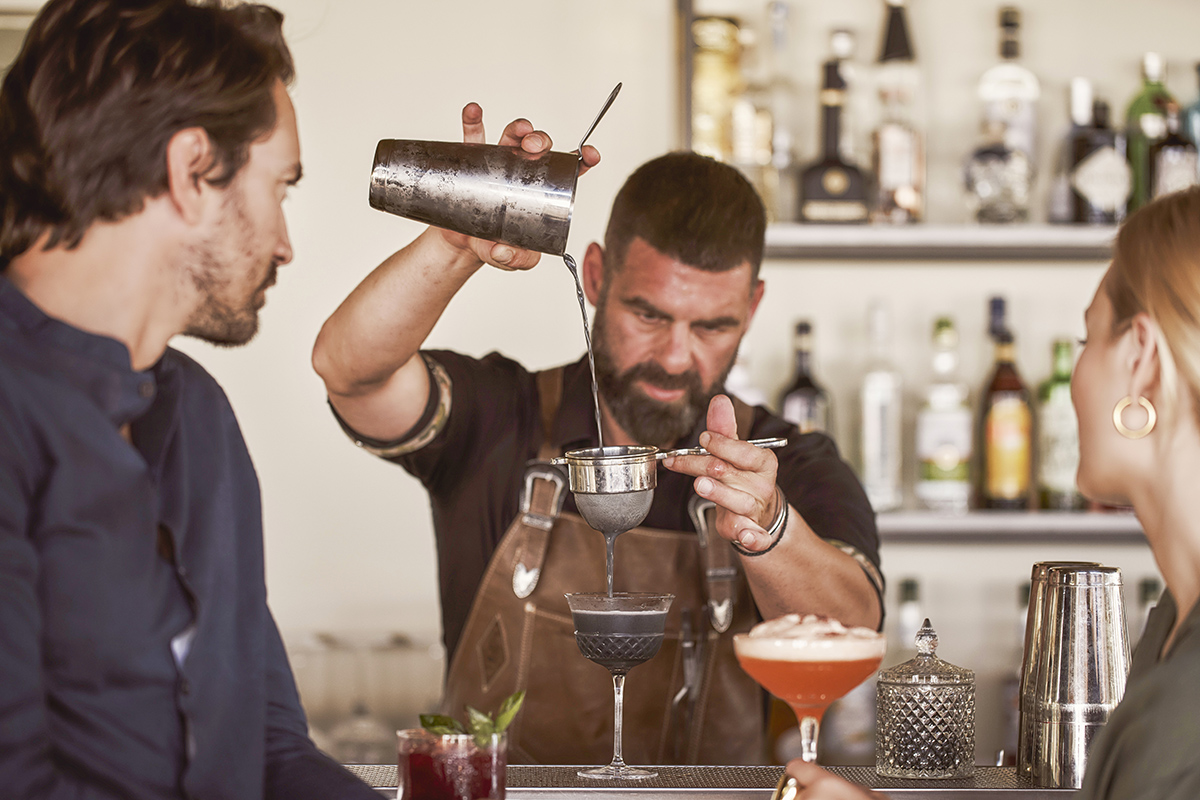

There’s a magic in dining at Flya in the evening, especially if you sit outside. The light fades from the sky and lights on the trees start to twinkle, adding to the all-encompassing wave of romance. Whatever you plan to eat, start your meal with one of life’s simplest but greatest pleasures: freshly baked sourdough, still warm from the oven and beautifully crunchy on the crust. At Flya the bread is served with locally pressed extra virgin olive oil, plus Za’tar made with wild oregano picked on nearby hills. Having tasted this, shop-bought bread will never satisfy your cravings again.
Spiros’ menu showcases not only ingredients from the island, but from the surrounding waters as well. There are few places in the world where you will find seafood fresher, tastier, or more exquisitely served. Oyster lovers will be in their element with oyster seashells served imaginatively with pickled onion, ouzu, and caviar, but if that sounds one step too far for your palate, the grouper carpaccio with lime, chili, scallions, and garden herbs will melt effortlessly on your tongue. There are mouthwatering hot appetizers too, and the maritime gods are ever generous: try the “sea pebbles” which are fish of the day and sea fennel dipped in tempura batter, accompanied by smoked taramasalata and lemon, or the equally divine octopus with black raisins and an ink savoro sauce.
There’s no shame in eating solely appetizers, and at lunchtime or on a scorching hot day, that may well be the best way to go. The main courses are ever tempting, however, so if you can possibly make space for one, do. Look out for delights such as the pan-seared fish of the day with paprika-braised leeks and smoked mussels, or the lamb fricassee with braised celery, preserved lemon, and lime rice foam. The advantage of staying at Olivar two nights or more is that you can steadily work your way through the menu, celebrating with each mouthful the natural bounty of Corfu and the creativity and skill of the producers and chefs who have brought it from the land and sea to the table.


